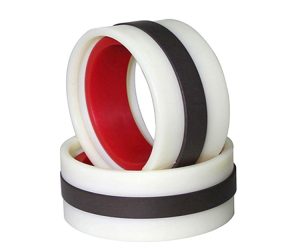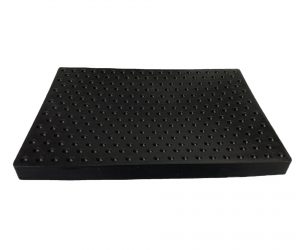The Algorithmic Heart of the Turning Factory: A Symphony of Precision and Chaos. The future of turning factories hinges on a relentless pursuit of technological advancement, coupled with a profound understanding of evolving market dynamics and environmental concerns. The successful factories will not merely optimize existing processes but will actively anticipate and shape the future of manufacturing. This requires a commitment to continuous improvement, a willingness to embrace disruptive technologies, and a proactive approach to environmental stewardship. The narrative of the turning factory is far from over, but its future trajectory remains uncertain, dependent on the industry's ability to adapt and innovate in the face of unprecedented challenges.
I. Genesis of the Machined Form: Beyond Simple Turning
A. The Industrial Colossus: Turning's Unsung Power. Far from a mere subtractive process, turning represents a fundamental pillar of modern industrial civilization. Its influence reverberates across seemingly disparate sectors – from the intricate mechanisms of aerospace engineering to the ubiquitous components of consumer electronics – underscoring its critical role in shaping the tangible world around us. The precision demanded, the tolerances achieved, are not merely metrics; they are the very foundation upon which countless technological marvels are built.
B. Evolutionary Arms Race: From Artisanal Skill to Algorithmic Mastery. The evolution of the turning factory is a compelling narrative of technological advancement, a relentless pursuit of increased efficiency and precision. The transition from the painstaking artistry of manual lathes to the sophisticated orchestration of CNC machines represents a paradigm shift, a leap from human dexterity to algorithmic mastery. This evolution, however, is not complete; the relentless pressure for innovation continues to drive the development of ever more sophisticated processes and materials.
II. The Choreography of Metal Removal: Deconstructing the Turning Process
A. The Lathe: A Crucible of Transformation. The lathe, far from a simple machine, is a complex system of interacting forces, a dynamic interplay between rotating workpiece, precisely guided cutting tool, and the sophisticated control systems that govern their interaction. The seemingly simple act of material removal belies a profound understanding of physics, material science, and control theory. The range of lathe configurations, from miniature precision instruments to behemoths capable of shaping massive components, reflects the sheer diversity of applications this fundamental technology supports.
B. Beyond the Obvious: Unpacking the Advantages of Turning. The advantages of turning extend beyond the readily apparent capabilities of shaping complex geometries and achieving tight tolerances. The process's inherent efficiency, its capacity for high-volume production, and its adaptability to a wide range of materials contribute to its enduring dominance in the manufacturing landscape. Furthermore, the potential for integration with advanced automation and monitoring systems further enhances its economic viability and overall productivity.
III. The Material Equation: A Symphony of Properties and Predictability
A. The Alchemist's Palette: Material Selection and its Consequences. The choice of material is not a trivial matter; it is a critical decision that profoundly influences the entire manufacturing process. The properties of steel, aluminum, brass, titanium, and a host of other alloys – their machinability, strength, durability, and cost – must be carefully considered in relation to the specific demands of the application. This selection process is a complex optimization problem, balancing performance requirements with economic constraints.
B. Quality Assurance: The Guardian of Integrity. The pursuit of consistent, high-quality output demands rigorous quality control at every stage of the process. From the initial inspection of raw materials to the final verification of finished components, a comprehensive system of checks and balances is essential to ensure that the integrity of the product is maintained throughout the manufacturing cycle. The failure to adhere to these standards can have catastrophic consequences, highlighting the critical importance of robust quality assurance protocols.
IV. The Algorithmic Choreography of Turning: A Manufacturing Deep Dive
A. Deconstructing the Turning Process: The seemingly straightforward act of turning raw material into precision components belies a complex interplay of variables. Workpiece preparation transcends mere surface cleaning; it involves intricate pre-machining strategies to mitigate inherent material flaws and optimize subsequent cutting parameters. Loading, far from a simple insertion, necessitates precise alignment and clamping to minimize vibration and ensure dimensional consistency across multiple iterations. The programming phase transcends simple G-code; it involves sophisticated CAM software, incorporating predictive modeling and adaptive control algorithms to dynamically adjust cutting parameters based on real-time feedback from sensors embedded within the lathe itself. The turning operation itself is a high-stakes dance between tool geometry, feed rate, depth of cut, and cutting fluid selection, each parameter influencing surface finish, dimensional accuracy, and tool life in unpredictable ways. Finally, inspection transcends simple dimensional verification; it involves rigorous statistical process control (SPC) analysis, incorporating metrology data to identify subtle trends indicative of process drift and potential failure modes.
B. Advanced Turning: Beyond the Cutting Edge: The relentless pursuit of manufacturing excellence necessitates a continuous evolution of techniques and tooling. This extends beyond the adoption of advanced materials like CBN and PCD cutting tools; it encompasses the integration of high-pressure coolant systems to enhance chip evacuation and reduce cutting temperatures, the implementation of active vibration damping systems to mitigate chatter, and the utilization of sophisticated sensor arrays to monitor tool wear in real-time, enabling predictive maintenance and minimizing downtime. Workholding has evolved beyond simple chucks; advanced hydraulic and pneumatic clamping systems ensure consistent workpiece rigidity, even under extreme cutting forces. Furthermore, the integration of AI-driven process optimization algorithms allows for dynamic adjustment of parameters, leading to unprecedented levels of efficiency and precision.
V. Precision's Crucible: Accuracy and Quality Assurance in Turning
A. Tolerances and Standards: A Tightrope Walk: The tolerances demanded in modern turning applications often push the boundaries of what's technologically feasible. Meeting these stringent requirements necessitates not only the use of precision measuring instruments like CMMs and laser interferometers, but also a deep understanding of statistical process control and the ability to model and mitigate sources of variation throughout the entire process chain. The interpretation of measurement data is crucial; advanced statistical methods are employed to distinguish between systematic and random errors, allowing for targeted process improvements.
B. Quality Control: A Multifaceted Shield: Quality assurance in turning extends far beyond dimensional accuracy. Non-destructive testing (NDT) encompasses a range of techniques, including ultrasonic inspection, eddy current testing, and X-ray radiography, to detect internal flaws and inconsistencies. Destructive testing, though seemingly counterintuitive, is essential for validating material properties and ensuring the component can withstand anticipated stresses. This includes tensile testing, fatigue testing, and impact testing, each providing crucial insights into the component's performance under various loading conditions. The data generated from these tests feeds back into the design and manufacturing process, driving continuous improvement.
VI. The Ubiquitous Reach of Turned Components: Industrial Applications
A. Precision's Reach: The versatility of turning extends far beyond the readily apparent. From the intricate components of aerospace engines and the delicate mechanisms of medical implants to the seemingly simple parts of consumer electronics, turned components are the silent workhorses of modern technology. Their precision and reliability are critical to the functionality and safety of countless products. The automotive industry, for example, relies heavily on turned components for engine parts, transmission components, and steering systems.
B. The Unsung Heroes: Consider the seemingly mundane: the smooth operation of a power tool's rotor, the precise alignment of a camera lens, or the seamless movement of a precision-engineered robotic joint. Each relies on the often-invisible precision of turned components. These seemingly simple parts represent a culmination of advanced manufacturing techniques and rigorous quality control, underscoring the vital role of turning in our technologically advanced world.
VII. Manufacturing's Perpetual Motion: Efficiency and Innovation in Turning
A. Optimizing the Ineffable: The pursuit of efficiency in turning factories is a continuous journey, not a destination. Lean manufacturing principles, while valuable, are merely a starting point. Advanced automation, including robotic loading and unloading systems, automated tool changing, and integrated quality control systems, are crucial for maximizing throughput and minimizing waste. However, the human element remains critical; continuous training and upskilling of the workforce are essential for adapting to evolving technologies and optimizing complex processes.
B. Innovation's Crucible: The future of turning lies in the relentless pursuit of innovation. This extends beyond the development of new cutting tool materials; it encompasses the integration of advanced sensor technologies, the adoption of digital twins for virtual process optimization, and the application of machine learning algorithms for predictive maintenance and real-time process control. The convergence of additive and subtractive manufacturing techniques holds the potential for revolutionary advancements, blurring the lines between design and manufacturing and creating unprecedented opportunities for innovation.
VIII. The Evolving Ecosystem of Precision Machining: Sustainability and the Uncertain Future of Turning Factories
A. The Paradox of Progress: Environmental Stewardship in a High-Throughput Industry
The relentless pursuit of efficiency in turning factories presents a stark environmental challenge. While advancements in precision machining yield unparalleled levels of product refinement, the inherent energy consumption and waste generation of these processes demand a critical reevaluation. The transition towards sustainability is not merely an ethical imperative but a strategic necessity, demanding a complex interplay of material science innovation (exploring bio-based alternatives and closed-loop recycling systems), process optimization (embracing lean manufacturing principles and predictive maintenance), and a radical shift towards circular economy models. Failure to adapt risks not only environmental penalties but also a loss of market competitiveness in an increasingly environmentally conscious global landscape.
B. Navigating the Technological Maelstrom: Disruptive Innovations and Uncertain Outcomes
The future of turning operations is characterized by a volatile confluence of emerging technologies, each promising transformative potential yet fraught with unforeseen consequences. Additive manufacturing, while offering unprecedented design freedom and reduced material waste, introduces complexities in scaling production and ensuring consistent part quality. The implementation of digital twins, while promising enhanced predictive capabilities and optimized process control, necessitates substantial investments in data infrastructure and skilled personnel. The integration of Industry 4.0 technologies, while theoretically enhancing efficiency and connectivity, raises concerns about data security, cybersecurity vulnerabilities, and the potential for unforeseen system failures. The successful navigation of this technological maelstrom requires a strategic approach that balances innovation with risk mitigation.
IX. Conclusion: A Necessary Evolution or an Impending Disruption?
Turning factories remain indispensable to modern industry, providing the fundamental building blocks for countless technological advancements. However, their continued dominance is not guaranteed. The rise of alternative manufacturing processes, the increasing prevalence of automation, and the evolving demands of a sustainability-focused global economy present significant challenges. The factories that thrive will be those that proactively adapt, embracing innovation while strategically managing risk and prioritizing sustainability.
FAQs:
What is the primary function of a turning factory?
The seemingly mundane turning factory belies a complex interplay of forces, a microcosm of industrial precision where chaos yields to order. Its primary function transcends mere component production; it's the crucible where raw material is transmuted into the intricate, precisely engineered arteries of modern technology. From the automotive behemoths that traverse our highways to the microscopic marvels of medical instrumentation, the turning factory's output forms the skeletal framework of our technological civilization. Its influence extends far beyond the immediately visible, permeating nearly every facet of contemporary life.
What are the key benefits of turning operations compared to other metal-cutting processes?
The inherent advantages of turning operations over alternative metal-cutting processes are not merely incremental; they are transformative. While milling, grinding, and other techniques offer specific niches, turning excels in its capacity to generate complex geometries with tolerances that push the boundaries of measurable accuracy. This capability, coupled with its remarkable efficiency in high-volume production, renders it the dominant force in the creation of identical, high-precision parts. The economic implications are profound, shaping global supply chains and influencing the very cost structure of countless industries.
What are some of the most common materials used in turning factories?
The material palette of the turning factory is a testament to the diversity of its applications. Acero, in its myriad alloys, forms the bedrock, its strength and versatility matched only by its ubiquity. Aluminum, with its lightness and corrosion resistance, finds its niche in aerospace and automotive applications. Brass, a venerable material, contributes its aesthetic appeal and machinability. Titanio, the exotic metal of choice, pushes the boundaries of performance in demanding high-stress environments. The selection of material is not a trivial choice; it's a strategic decision that dictates the very lifeblood of the final product, influencing its longevity, performance characteristics, and ultimately, its cost-effectiveness.
How do turning factories ensure the accuracy and quality of their products?
Quality control in a turning factory is not merely a procedural afterthought; it's an integral, interwoven aspect of the entire manufacturing process. Stringent tolerances, often exceeding the capabilities of human perception, are enforced through a sophisticated arsenal of tools. Precision measuring instruments, coordinate measuring machines (CMMs) capable of sub-micron accuracy, and advanced non-destructive testing techniques, including ultrasonic and X-ray inspection, ensure that each component conforms to the most exacting standards. Failure is not an option; the consequences of deviation can be catastrophic.
What are some of the emerging trends and technologies that are shaping the future of turning factories?
The future of the turning factory is not a linear progression; it's a dynamic, unpredictable landscape shaped by exponential technological advancements. Additive manufacturing, once a niche technology, is poised to revolutionize the production process, enabling the creation of complex geometries previously deemed impossible. Digital twins, virtual representations of the physical manufacturing process, offer unprecedented opportunities for optimization and predictive maintenance. The integration of Industry 4.0 technologies, encompassing the Internet of Things (IoT), big data analytics, and artificial intelligence (AI), will usher in an era of unprecedented efficiency, precision, and sustainability. The environmentally conscious factory of the future will minimize waste, optimize energy consumption, and strive for a net-zero carbon footprint, reflecting a growing awareness of the broader environmental impact of industrial production. The turning factory, therefore, is not merely a producer of parts; it is a dynamic, evolving entity at the forefront of technological innovation.


